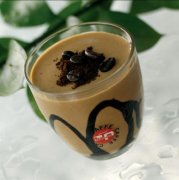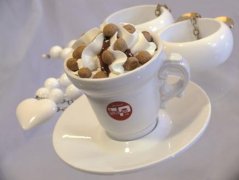Italy: passionate pascucci Coffee Culture
Coffee tastes different in different countries. So, how much do you know about Italian coffee culture? When we travel, if you can know in advance about the local coffee culture in Italy, then it must be just a break during the trip, and you can really taste the enthusiasm and customs of the local culture.
There are two things to be careful when you go sightseeing in Italy: one is a man and the other is coffee. In Italy, coffee and men are actually two different things, so there is a famous Italian saying: men should be like good coffee, both strong and enthusiastic!

Italian coffee, named Pascucci in English, is different from the roasting methods adopted by other brands. Pascucci coffee uses a slow roasting process, roasting over medium heat for 25 to 18 minutes, evaporating the water in the beans naturally to obtain high quality coffee beans. Pascucci Coffee has spent more than 130 years perfecting the balance between humanities and coffee. Today, they combine coffee art and modern technology to ensure the purity of coffee beans and provide a classic coffee with harmonious aroma and mellow taste for consumption. Every time people are asked to drink, they fall into unspeakable charm and are unforgettable. Most Italians make a cup of coffee as soon as they get up. Coffee shops can be seen everywhere in the street, regardless of whether men or women drink from morning till night. They sell a cup of coffee of about 400 lira, or about NT $10, for people to drink up standing up.
On average, Italians drink 20 cups of coffee a day. The coffee beans that make Italian coffee are the most fried beans in the world. This is in line with the special function of the Italian coffee pot to instantly extract coffee. Since the weight of a cup of Italian coffee is only 50 milliliters and the amount of coffee beans is only six to eight grams is enough, so this kind of strong-looking coffee actually does not hurt the stomach at all and even helps digestion!
Italian Pascucci coffee professional brewing process, each cup of coffee can show its own unique taste and a variety of aroma. They put the enthusiastic culture into this, adhere to the traditional Italian hand-drawn flowers, this handicraft culture is particularly simple and precious in today's noisy era of industrialization, and coruscate a strong vitality.
Important Notice :
前街咖啡 FrontStreet Coffee has moved to new addredd:
FrontStreet Coffee Address: 315,Donghua East Road,GuangZhou
Tel:020 38364473
- Prev

Teach you the common sense of making coffee and pursue a high quality of life
Some people say that only 50% of every cup of coffee is made of coffee beans and sugar. Another 50% is a complex thing called feeling. Some friends will think that no matter in any way to brew coffee, the coffee powder that has been brewed once will have to be discarded, which is very wasteful. Especially for some coffee that is more expensive, you have to brew the coffee powder many times before you realize it.
- Next

The professional atmosphere of coffee shop shapes the operation of coffee shop.
Nowadays, when consumers consume coffee rapidly, they will respond not only to the physical and substantive attractiveness of coffee, but also to the whole environment, such as service, advertising, impression, packaging, fun and other incidental factors. Pascucci Coffee believes that one of the most important factors is the leisure environment. If the scope is further reduced, it refers to the coffee shop.
Related
- Beginners will see the "Coffee pull flower" guide!
- What is the difference between ice blog purified milk and ordinary milk coffee?
- Why is the Philippines the largest producer of crops in Liberia?
- For coffee extraction, should the fine powder be retained?
- How does extracted espresso fill pressed powder? How much strength does it take to press the powder?
- How to make jasmine cold extract coffee? Is the jasmine + latte good?
- Will this little toy really make the coffee taste better? How does Lily Drip affect coffee extraction?
- Will the action of slapping the filter cup also affect coffee extraction?
- What's the difference between powder-to-water ratio and powder-to-liquid ratio?
- What is the Ethiopian local species? What does it have to do with Heirloom native species?

